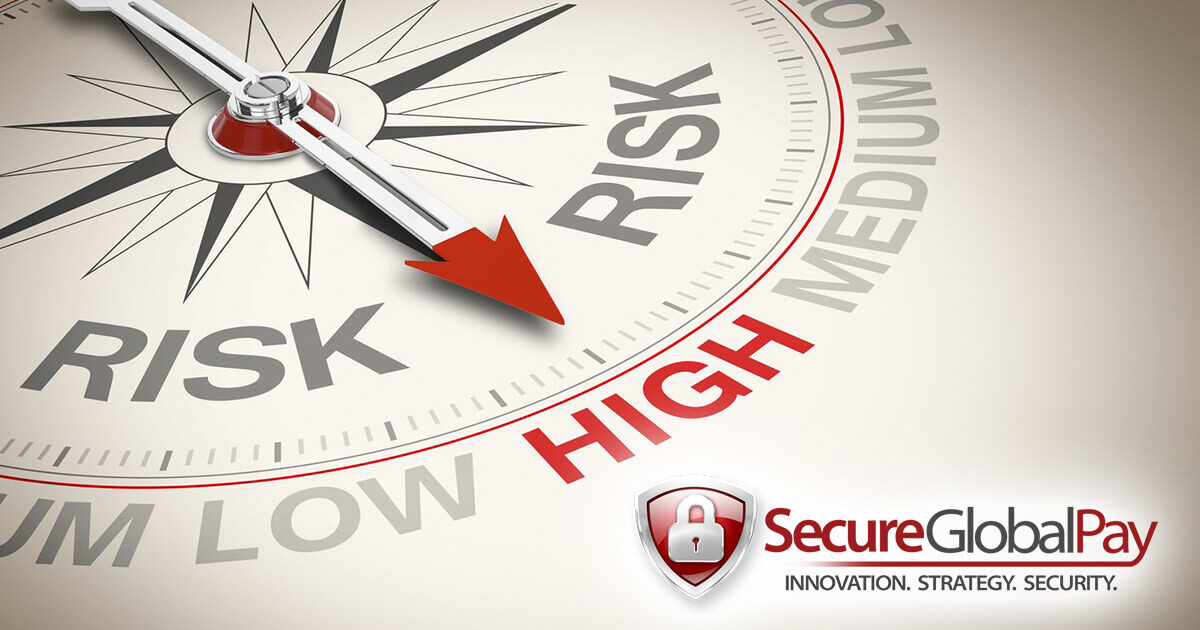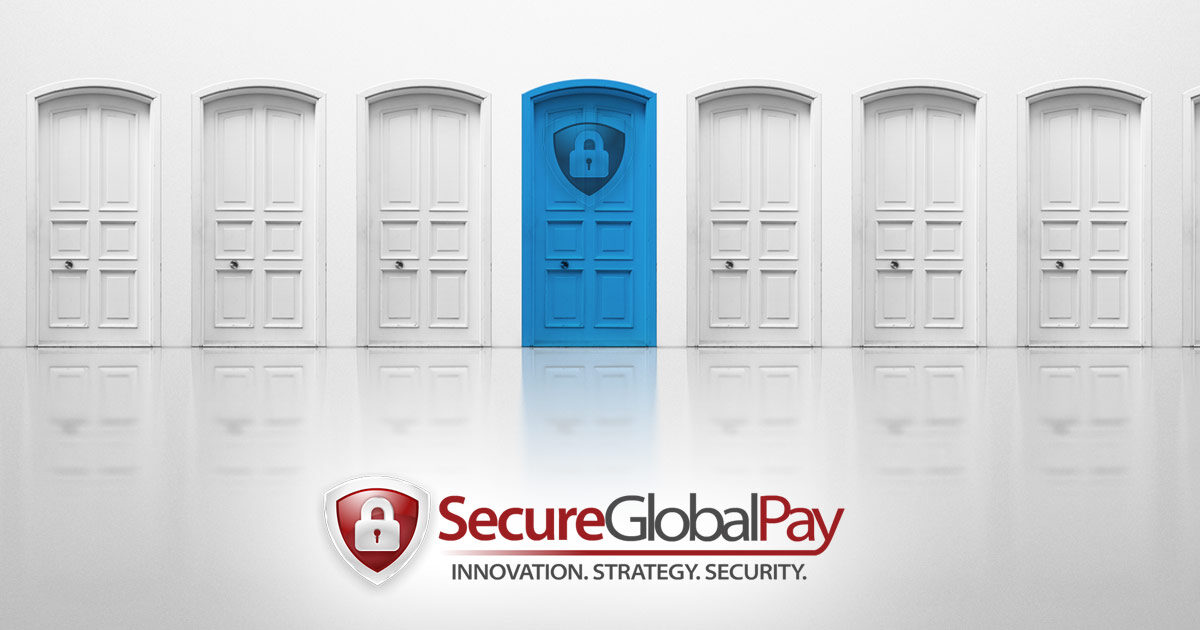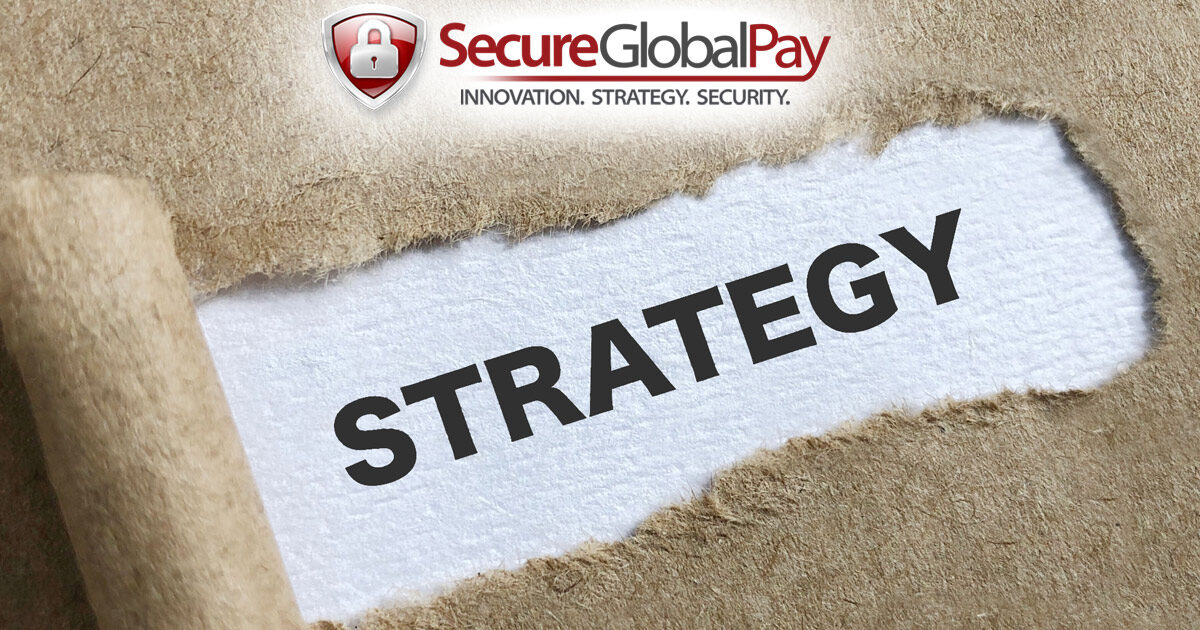
High-Risk Merchant Account USA – Your Complete Guide 2023
For businesses with an elevated risk of fraud or chargebacks or possessing other elevated risk characteristics, a high-risk merchant account USA is essential to allow them to accept card payments. With this particular type of merchant account in place, you can confidently accept credit card payments if your business is considered high risk. For example, payment processing for merchant firearms sales or tobacco products may be considered high-risk and require dedicated high risk merchant account providers in the USA, specializing in high risk merchant accounts USA to process their payments.
The need for this type of specialized payment processing is on the rise in America, particularly with the influx of online sales during and post covid. The best high-risk merchant account providers can provide payment solutions tailored to the needs of high-risk merchants USA, ensuring that payments are processed quickly and securely while avoiding potential fines or penalties associated with high risk merchant processing for certain types of goods or services.
- What Makes a Business High-Risk?
- Industries that May be Deemed as High-Risk Merchants
- Top 6 High-Risk Merchant Account USA Industries
- Who are High-Risk Merchants?
- High-Risk Account USA vs Regular Merchant Accounts
- What Makes a Good High-Risk Merchant Account USA Payment Processor
- SecureGlobalPay 1 High-Risk Merchant Account Provider USA
- How High-Risk Merchant Account Providers in the USA Choose a Merchant
- How to Choose the Perfect High-Risk Payment Processor
- High-Risk Merchant Account USA FAQs
- Final Words on High-Risk Merchant Services in USA
This blog post will provide a comprehensive overview of what it takes to be a High-Risk Merchant in America. It will cover the various merchant types, their business challenges, and the best high-risk merchant account providers that can help them succeed.

What Makes a Business High-Risk?
Risk calculations for the payment processing industry are unique to each processor, acquiring bank, and service provider. With no central authority dictating standards, it’s up to independent sales organizations (ISO’s) in the space to create their own risk parameters – a complex dance that requires expertise, years of experience, and attention to detail.
Some merchant account providers categorically mention specific industries they don’t work with as part of their high-risk policies, such as travel services, gambling sites, debt consolidation firms, and payday lenders. Other industries may be considered high-risk if they have a higher-than-average chargeback ratio, produce significant returns, credit card fraud, or the merchant is based in an unstable region.
The bottom line is that anything outside the norm can be considered high-risk. That’s why it’s essential to do your due diligence when selecting a high risk merchant account provider. Today’s merchants need seasoned, experienced high risk merchant account providers in USA professionals that are dedicated to this space and have the expertise to assess risks associated with each specific business adequately.
High-Risk Business in Context
Each transaction and each new customer encounter can potentially place a business’s professional reputation on the line. Annual and quarterly shareholder reports record the success or failure of this journey.
As a business grows, so does the potential risk.
There is an irony here. Like opening your business, each new growth stage involves daring risk for success. But as a business becomes more prosperous and seeks to expand, its owners must take the information documented in internal reports to convince other acquiring banks, lending institutions, and credit card processing firms that their business is a sound investment even though their industry is considered a high risk business type.
Banking relationships, loans, and online transaction processing are all fundamental to the growth and expansion of a business. But just as you have calculated and sought to minimize risk at each stage of your business’s growth, so must these institutions weigh and manage risk to themselves and their shareholders.
Evaluating High-Risk Merchant Account USA Risk – An Outsiders Perspective
It’s important to know all about merchant account underwriting and what criteria is used to evaluate high risk business type applicants. And what causes some to be designated too hot to handle? How does a business come to be considered high-risk in the first place?
Businesses can be considered high-risk due to the following:
- Internal, business-specific factors
- Factors within the industry itself
Internal, operations-specific factors that cause a business to be labeled high-risk are related to how the business operates daily. Factors like this can be addressed by attending to housekeeping details.
Does your business have its operating costs covered and money in the bank? This is a measure of your business’s prosperity and stability. Does the principal have poor credit and in need of a bad credit merchant account? This is a measure of trustworthiness, good sense, and professionalism.
Does the business have any outstanding loans or bills? Failing to attend to these reflects a business’s relationships with partners and lending institutions. A failure to accrue funds, maintain sound credit, and pay bills will reflect poorly on a business and cause it to be classified as high-risk.
High-Risk Merchant Account USA Industry Specific Risks
External factors may also play a role in the risk assessment of particular businesses considered high risk. This is often due to factors beyond the owner’s control, such as characteristics of the industry in which the business operates.
Certain industries, such as the e-cigarette, high risk merchant accounts for nutraceuticals, and online gambling, are considered high-risk due to the nature of their product and client base. Less obvious are businesses like furniture stores and bankruptcy attorneys. What about these industries cause them to be viewed as high-risk?
These businesses share one thing in common, processing history. A high rate of customer fraud, credit card disputes, bad credit, and chargebacks. These are day-to-day risks that individual merchants understand as the cost of doing business. But for potential partners, such as credit card processing companies or high risk merchant account providers in USA online payment service providers, such bad practices can accumulate over time and lead to fines, overage fees, and lost profits.
For example, some industries are prone to chargebacks – disputes or eventual cancellation of credit card transactions. This can be due to many factors, not all illegal or fraudulent, but it can pose a risk to individual businesses and, by extension, banks and credit card companies. The importance of understanding credit card chargebacks and fraud is crucial to a business’s success.
Any time a business’s industry or individual character includes the possibility of loss to itself or partnering institutions, it is classified as high-risk. This can sometimes be fixed by attending to individual housekeeping details. In others, it is simply due to the nature of the industry in which the business operates.

Industries that May be Deemed as High-Risk Merchants
- Adult merchant accounts for services or products
- Accounting and tax preparation
- Automotive accessories and parts
- Age-restricted items
- High risk merchant accounts for bail bonds
- Cigarettes and tobacco products
- Software applications
- Credit Repair
- Online dating merchant services
- Debt consolidation
- Weight loss programs
- Digital products downloads
- Document preparation
- Dropshipping
- Electronics
- Fantasy sports
- Financial Services
- Gun-friendly credit card processing for firearms & accessories
- Free trials
- Cannabis
- Outdoor or hunting and equipment
- Jet charter merchant account
- Law firms
- MLMs.NPO
- Supplements
- Online casinos and gaming
- Pawn shops
- Precious coins/metals
- Digital services like SEO/SMM
- Self-storage
- Smoking products and accessories
- SAAS
- Tasers and stun guns
- Online travel merchant accounts
- Vape and e-cigarettes

Top 6 High-Risk Merchant Account USA Industries
1. Nutraceutical Merchant Accounts
Topping the list of high-risk businesses, the nutraceuticals market value is expected to reach an estimated USD 454.55 billion this year and a projected CAGR of 9% for the next decade. These products include dietary supplements, vitamins, and health-related products often sold online. While some legitimate nutraceutical merchant processing companies are in this space, many use aggressive marketing tactics that can lead to chargebacks and customer disputes. Additionally, these businesses require high risk merchant services USA as they are vulnerable to fraud as they often sell their products online or through third-party websites.
Finding reliable high risk merchant account providers in USA, providing online credit card processing services can be challenging for nutraceutical merchants. If you are in the nutraceuticals business, look for a merchant service provider that specializes in high-risk industries like SecureGlobalPay and can provide you with tailored solutions.
2. Adult Industry Merchant Accounts
With an impressive CAGR of 6.69% projected for the next five years, the Adult Entertainment market is currently valued at over $51K million and forecast to reach a whopping $76K million by 2028!
Merchants in the adult entertainment industry are considered a high-risk category. These businesses, which include adult websites and other businesses related to the industry, can face increased scrutiny from banks and payment processors due to their potential for legal issues.
3. E-Cigarette Merchant Accounts
E-Cigarette sales are rising and look to be increasing at an impressive rate of 3.87% a year, with expected US revenue totaling over $8 billion in 2023 alone! The United States is also leading the way here, having shown itself to generate more than any other country around that same period.
The E-cigarette industry is considered a high-risk business because the industry is still relatively new and unregulated. Additionally, these businesses face numerous chargeback risks due to many underage users and fraudulent purchases. It is extremely important to understand chargeback protection and how to prevent disputes.
4. Online Gambling Merchant Accounts
The lucrative global online gambling and betting industry is surging with predicted growth of 86% over the next 5 years, amounting to a whopping $114.4 billion by 2028 as per the forecast of statista.com.
Online gambling sites are considered high-risk businesses due to the potential for customer fraud and chargebacks. Additionally, these businesses can face legal issues depending on where they operate. Gambling merchants should find a merchant account provider that offers specialized services tailored to their industry. These providers may offer advanced security measures like anti-fraud tools and chargeback prevention services.
5. Firearms Merchant Accounts
The Gun & Ammunition Stores industry is booming, boasting an impressive USD 20.0 bn market size for 2023 and projected growth of 1.9% this year. However, firearms merchants are also classified as high-risk and obtaining an online firearms merchant account is extremely difficult. These businesses face an increased risk of chargebacks due to the potential for fraudulent purchases and criminal activity. Additionally, these businesses often require extra security measures to ensure customers’ safety which a high-risk merchant account USA can provide.
When looking for payment processing for firearms sales, firearms merchants should look for one with experience in this industry that can provide tailored payment solutions. Some providers may require higher fees than those for more traditional businesses and extra steps to protect themselves from legal and compliance issues. Additionally, these merchants should ensure that their merchant account provider has the security measures to protect their customers’ information.
6. Subscription Box Payment Processing
Subscription box businesses are considered high-risk because and securing a merchant account for recurring billing is never easy. These companies offer customers ongoing subscriptions to products and services, which can lead to an increased risk of chargeback ratio if a customer is unsatisfied with the product or service they received.
When looking for a merchant account provider, subscription box businesses should look for one with experience in recurring billing and can offer services such as fraud prevention tools and chargeback management.

Who are High-Risk Merchants?
High-risk merchants are businesses operating in an environment that could come with a greater risk of chargebacks and other fraudulent payments. These companies may struggle to access traditional merchant accounts without specialized, high-risk payment processors.
So, they must find the right high risk merchant services in USA partner to offer them transparent pricing models, dedicated customer support, and helpful tools to prevent adverse outcomes. An ideal solution will help businesses protect their bottom lines while unlocking new opportunities.

High-Risk Account USA vs Regular Merchant Accounts
A high-risk account USA differs from a low-risk merchant account in one fundamental way: the risk associated with processing payments. High-risk businesses are often considered higher due to their industry, products/services, or history of chargebacks. These merchants may be subject to higher fees and more stringent terms than a low-risk merchant account.
Higher Payment Processing Fees
Higher than normal high risk merchant account rates and fees are necessary to cover the added risk of chargebacks and other fraudulent payments. Additionally, specialized merchant accounts may include extra services such as fraud prevention and dispute resolution.
Regular businesses typically pay a competitive 0.3% to 0.50% processing fee on top of the interchange rate to accept credit card payments, making it easy and affordable to conduct transactions with customers. High-risk merchants, however, have higher fees – 1.5% to 3.5% of the total transaction value – due to their added risk and more specialized services.
Lengthier Application Process
High-risk businesses must also undergo a much more detailed application process than regular merchants. These accounts require extensive documentation, including proof of identity, business history, and financial information. Additionally, some high-risk merchants may be asked to provide extra materials related to their industry’s legal requirements and risk management systems.
Regular merchants are not required to submit such extensive information and may find their application process much simpler and faster. You might get approved in minutes or less if you need a standard small-business account.
Higher Chargeback Fees
High-risk businesses are also subject to higher chargeback fees than regular merchants. Chargebacks occur when customers dispute a transaction or claim they didn’t authorize it. The chargeback fee varies from processor to processor, but high-risk accounts can expect to pay anywhere from $25 to $100 per chargeback.
This fee is in addition to any fines or penalties imposed by the payment processor. Regular merchants typically have fewer chargeback fees, depending on their processor.
Cash Reserve or Holdback Requirements
High-risk businesses may also be subject to cash reserve or holdback requirements – a percentage of all transactions set aside by the payment service provider in case of chargebacks. Payment processors use this money to cover any losses they may incur from fraudulent payments.
Capped reserve: Payment processors may cap the money they reserve from your account. This ensures you don’t have to spend too much money simultaneously, allowing you to keep more cash.
Rolling reserve: This type requires you to set aside a percentage of each transaction for a specific time. This money is then released once the period ends.
Upfront reserve: Some processors may require an upfront payment before they offer you a merchant account. This money is used to cover any losses the processor may incur. Regular businesses don’t have to worry about such requirements, as they are seen as lower risk and, thus, don’t need extra protection.
Volume Caps
Keep an eye on your card transactions. If you’re not careful, some might be barred if they exceed a certain monthly dollar limit. Avoid any surprises and stay in the know about the amount charged to your account.
These high risk merchant services in USA limits apply to the amount of money you can process monthly or yearly, depending on your processor’s regulations. Volume caps protect the merchant and payment processor from fraud and other losses.
Additional High-Risk Merchant Account USA Technical Requirements
A high-risk merchant account USA may also be subject to additional technical requirements and robust payment gateway solutions for their credit card processing needs. These include extra security measures such as encryption and tokenization, advanced fraud prevention tools, and PCI compliance. SecureGlobalPay’s payment gateway for high risk business covers all the bases.
For example, regarding age-restricted products, your payment processor may ask you to invest in tools that help protect minors from accessing these items. Such safeguards maintain safety and ensure compliance with the law.

What Makes a Good High-Risk Merchant Account USA Payment Processor
Certain criteria for high-risk merchant account USA processors make them attractive to high-risk merchants. Here are some of the features you should look for when selecting a provider:
Low Transaction Fees
This is the percentage the processor takes when a transaction is processed. A good high-risk processor should have competitive pricing and fair and affordable transaction rates, so your business profits more from each sale. Never pay higher than the industry’s average rate. Compare high risk merchant services in USA providers to find the best deal.
Small Rolling Reserve
This is the amount of money set aside by the processor to cover any fraudulent charges or losses. Look for high risk merchant account providers in USA with a small rolling reserve or holdback so your business can retain more cash. If there’s wiggle room with the processor you’re working with, see if they can reduce the rolling reserve percentage below 10%. Even better yet – some accounts may be available for as low as 5%. Instead of tying up that money in reserves with them – it will go right back into your account after 180 days.
Fast Settlement Payout Period
A good high-risk processor should have a fast settlement payout period so you can access your money quickly. It’s important to shop around and compare the different payment processors available, as some may take longer than others to settle payments. Ensure you don’t get stuck waiting weeks just to receive your money. Typically, the payout window for conventional businesses lies between 2-3 business days, but the timeline can extend beyond usual norms for high-risk accounts.
Low or Zero Arrears & Hold-back
As a precautionary measure, processors often request that merchants agree to an arrears clause to minimize their credit risk. This necessitates the first payout being delayed for a set period of time. Negotiate this if possible – it’s worth trying.
Industry Payment Security Compliance
Choose a processor that complies with industry payment security standards, such as PCI-DSS. This will help you protect your online transactions and customer data from fraudsters. Oftentimes, their compliance status can be found right away on the website. However, if it is not visible, simply inquire about it.
Integration Process for Payment Gateways
The payment gateway integration process should be both easy and secure. Look for providers that offer a wide range of integration options to accept online payments. Most payment gateway providers host merchant services while offering basic methods such as hosted page checkouts to more advanced solutions like API integration. This way, you can minimize the time it takes to set up your high-risk payment gateway and get merchants to process payments quickly.
High Transaction Approval Ratio
A high-risk payment processor and merchant services provider should have a high transaction approval ratio. This means that more of your payments will be approved and processed. A solution with a significant rate of decline can harm your business operations and profitability. Ask the processor about their average approval rate before you make any decisions.
No Setup Fee
Some processors may charge you a setup fee when you set up a high-risk merchant account. Avoid this, if possible, by finding providers that don’t require such fees for their services.
Low Monthly Charges
Look for high risk merchant account providers in USA with low monthly charges to save money on your payments. When merchants do not reach the required transaction threshold, their fees can become a financial burden.
Easy Contract Term
The contract term should be easy to understand and straightforward. There should also be no hidden fees or penalties if you terminate the agreement. Go for a shorter contract to make sure you’re not locked in for too long if things don’t go as expected.

SecureGlobalPay 1 High-Risk Merchant Account Provider USA
SecureGlobalPay is the leading high-risk merchant account USA provider in the US. The company offers competitive rates, fast settlement payout periods, low or zero arrears and hold-backs, industry payment security compliance, an easy setup process, a high transaction approval ratio, and no setup fee.
With SecureGlobalPay’s secure and trusted solution, you can ensure the safety of your customers’ confidential data. Furthermore, you get 24/7 customer support and low monthly charges. SecureGlobalPay also provides a simple contract term that is easy to understand. This means no hidden fees or penalties if you terminate the agreement prematurely.
SecureGlobalPay gives you a reliable high-risk merchant account and all the features you need to succeed. Contact SecureGlobalPay today and take your high risk merchant services in USA to a new level.

How High-Risk Merchant Account Providers in the USA Choose a Merchant
Your chosen processor should understand the industry and be willing to take on high-risk accounts. Ensure they know your business operations and are aware of their associated risks. Once you’ve given them this information, they’ll be able to decide whether or not to accept you as a merchant.
They Need to Understand Your Business
Multiple factors make a business high-risk. The more data you provide your payment processor upfront, the better they’ll be able to help. This includes data related to your industry, chargeback rates, fraud rates, and the average transaction size. High risk merchant account providers in USA should also be able to handle any risks associated with your business operations.
Whether you’re a startup or an established organization, if you operate in an industry deemed as high-risk, it can be difficult to find reliable payment processing solutions. If you are transparent with your processor and follow the best practices outlined above, you can find a payment processing provider willing to work with you and provide your business with services.
They Think about the Long Term
When assessing a merchant, processors don’t only think about their own risk. They also consider your customers and the long-term relationship you have with them. The processor will find evidence that you’re dedicated to customer satisfaction and excellent service.
Furthermore, they will assess the quality of your products/services and ensure you comply with all applicable laws. They’ll also look at customer reviews to see if anyone has filed a complaint against you. This helps them evaluate your business’s reputation and the likelihood that customers would want to stay with you for the long term.
They will Find a High-Risk Merchant Services USA Banking Partner
After a payment processor approves a business, they look for the right bank to open an exclusive merchant account. This financial institution will serve as the base, allowing money from each card transaction to pass through.
Most high-risk payment processors work with multiple banks to find the best deal for a merchant. Each bank has its rules about what types of businesses it will accept and how much risk it is willing to take on. Ultimately, the processor will find the best fit for your business and secure an account with that bank.

How to Choose the Perfect High-Risk Payment Processor
High-risk businesses should take a proactive approach when looking for a payment processor. Don’t be afraid to ask questions and discuss the various features available. A good payment processor will offer tailored solutions specifically designed for high risk merchant services in USA, helping ensure your business is profitable in the long run.
Check the Processor’s Accepted Business Types
Make sure the processor accepts your business type. Even processors dealing with high-risk businesses may not be comfortable taking on every type of challenging business. It’s important to know upfront to avoid any surprises later on.
Check for Technical Details
Check the processor’s technical details like the Rate of Transaction (TDR/MDR), rolling reserve, settlement payout period, approval ratio, integration process, etc. These components are essential for understanding the processor’s capabilities and how much it will cost you in setup fees and other costs.
Ask about Fees and Terms
Ask the processor about their fees, terms, and conditions. Know when you’ll be charged for each transaction and what’s included in the cost. Also, make sure you understand any other associated costs or cancellation fees that may apply. This helps ensure no hidden costs can eat away at your profits.
Get Quotes from Multiple Providers
Research and get quotes from multiple providers to ensure you get the best deal. Doing this lets you compare rates and fees and choose the best for your business. This will also empower you to negotiate more favorable rates and fees.
Read Your Contract Terms Meticulously
Before signing any contract for high risk merchant services in USA, please read it carefully and understand the legal consequences. Be aware of all your rights and obligations when agreeing with a payment processor. Don’t hesitate to get professional advice if necessary.

High-Risk Merchant Account USA FAQs
What is considered a high-risk merchant account?
A merchant is usually considered high-risk if it operates in a high-risk industry or has a history of chargebacks or other issues that make it risky for the payment processor to process payments. For example, businesses that involve the sale of firearms, gambling, alcohol, and tobacco are considered high-risk.
Who needs a high-risk merchant services USA account?
Any business in a high-risk category must open a high-risk merchant account. This is because most traditional payment processors will not process payments for such businesses, so opening an account with a high-risk processor is the only way to accept card payments.
What are high-risk merchant services USA?
High-risk merchant services USA are payment processing solutions designed for businesses that operate in high-risk industries or have a history of chargebacks and other issues. These services help businesses accept customer payments, allowing them to grow and succeed.
Does it cost money to open a merchant account?
Yes, usually, there is an account setup fee. Fees vary depending on the processor and the nature of your business, so ask for quotes from multiple providers and compare their terms, fees, and conditions before deciding.
Who charges the merchant fee?
The card issuer usually charges the merchant fee when processing card payments. This is usually charged as a percentage of the total transaction amount and is deducted from the merchant’s total sales.
Are there any other costs associated with high-risk merchant accounts?
Yes, there are typically additional costs associated with high-risk merchant accounts. These include setup fees, monthly minimums, chargebacks, cancellation fees, early termination fees, rolling reserves, and other costs. Ask about all fees before signing a contract with a payment processor.

Final Words on High-Risk Merchant Services in USA
High-risk merchant accounts are essential for businesses in high-risk industries to accept payments and grow. It’s important to shop around and get quotes from multiple high risk merchant account providers in USA before carefully deciding and reading all the contract terms. Doing this will help you find the best solution while avoiding hidden fees or costly surprises.
We hope this guide has given you a better understanding of high risk merchant services in USA, and the costs associated with processing payments. With the right processor, you can accept payments safely and securely while protecting your business from potential risks.



